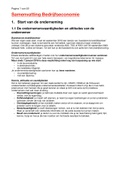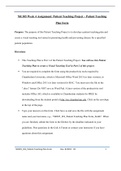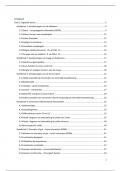Summary
Summary of “International Economics”, 3rd Bachelor of Business Administration
- Module
- Institution
- Book
This is my summary of International Economics. This summary contains all subject matter seen in semester 1 of the International Economics course. I have summarized both the lectures and the handbook. With this summary, you therefore have enough information to pass this course. I took this course in...
[Show more]













